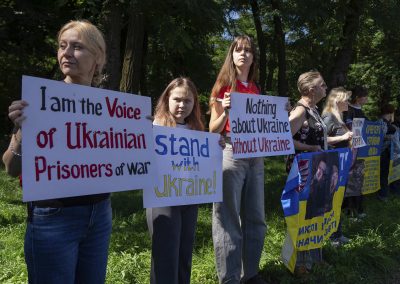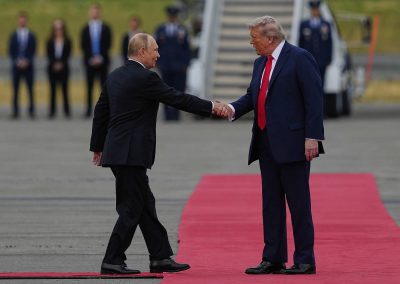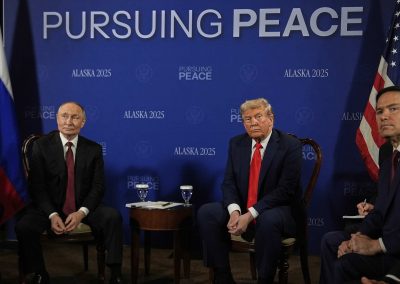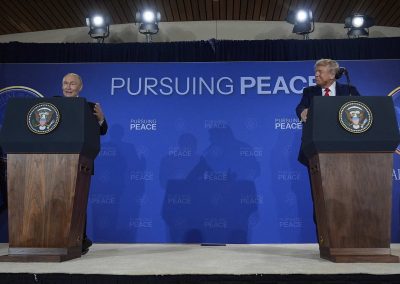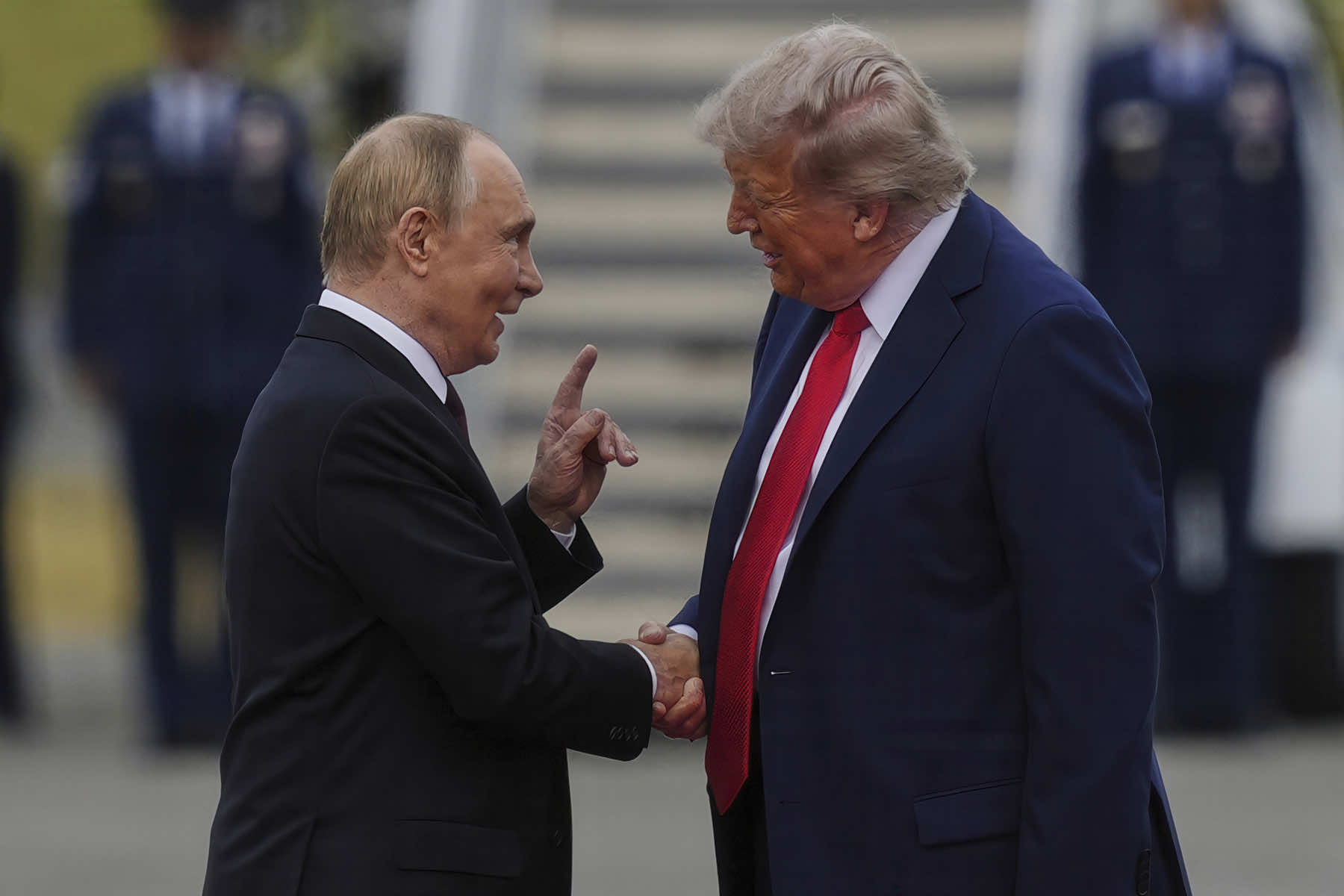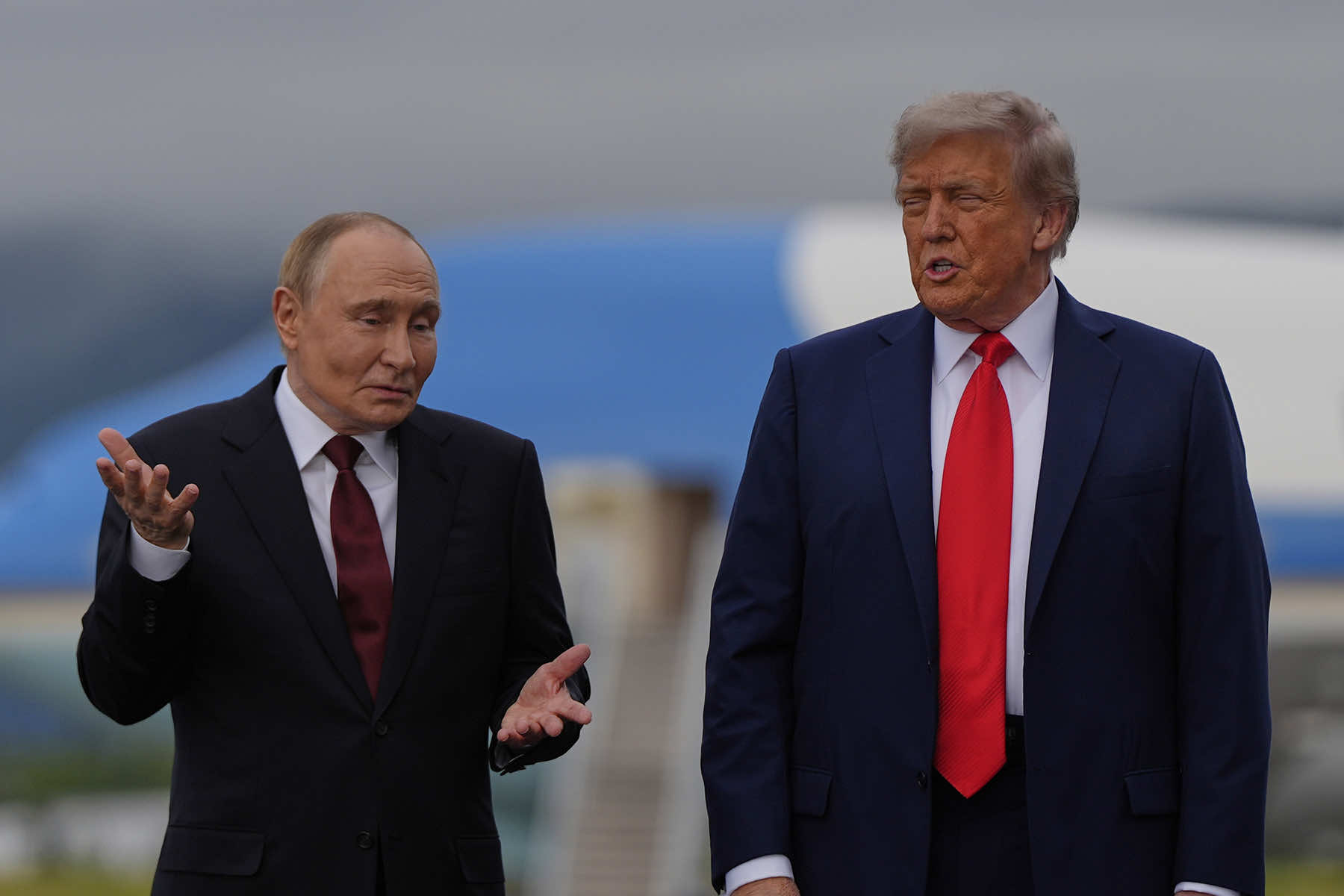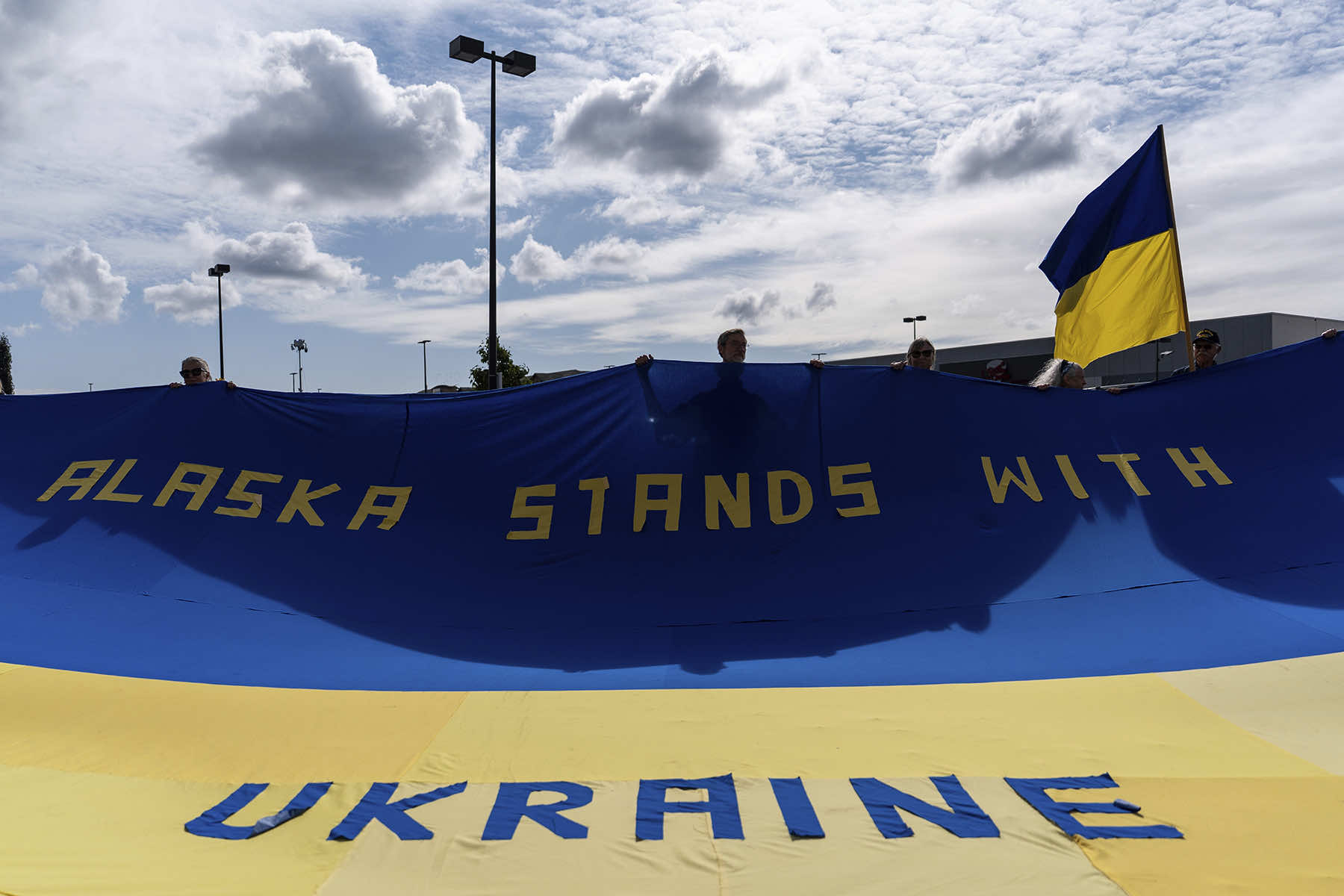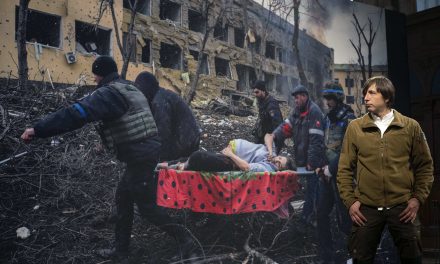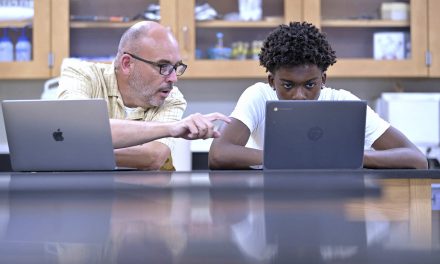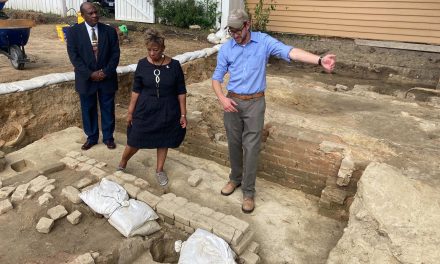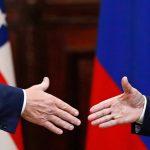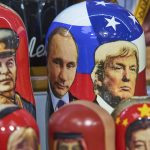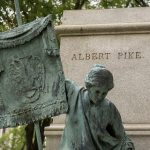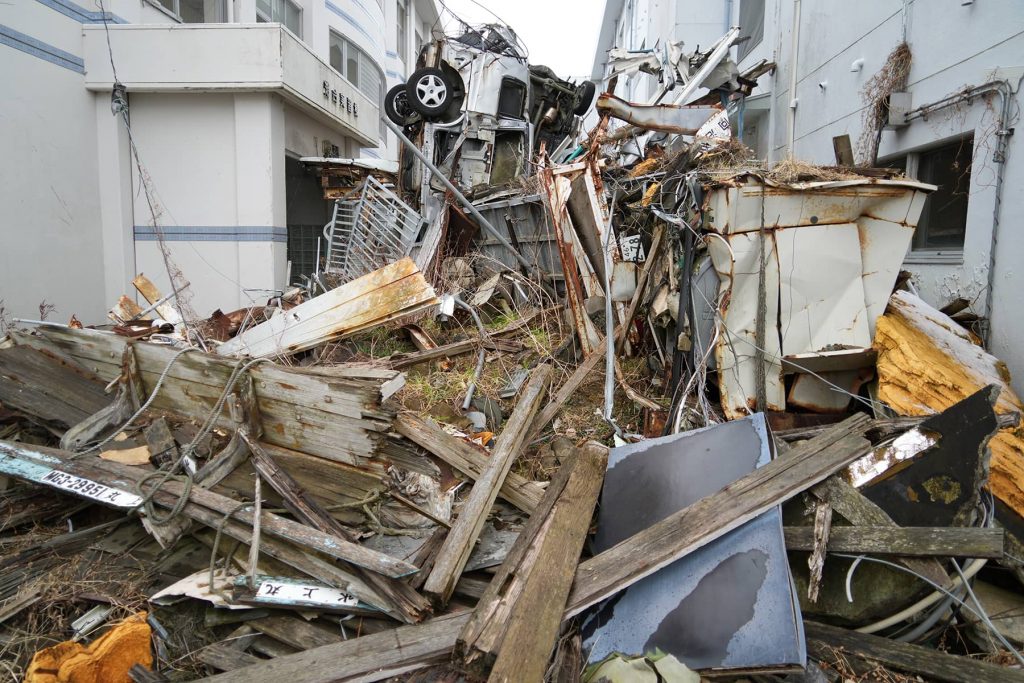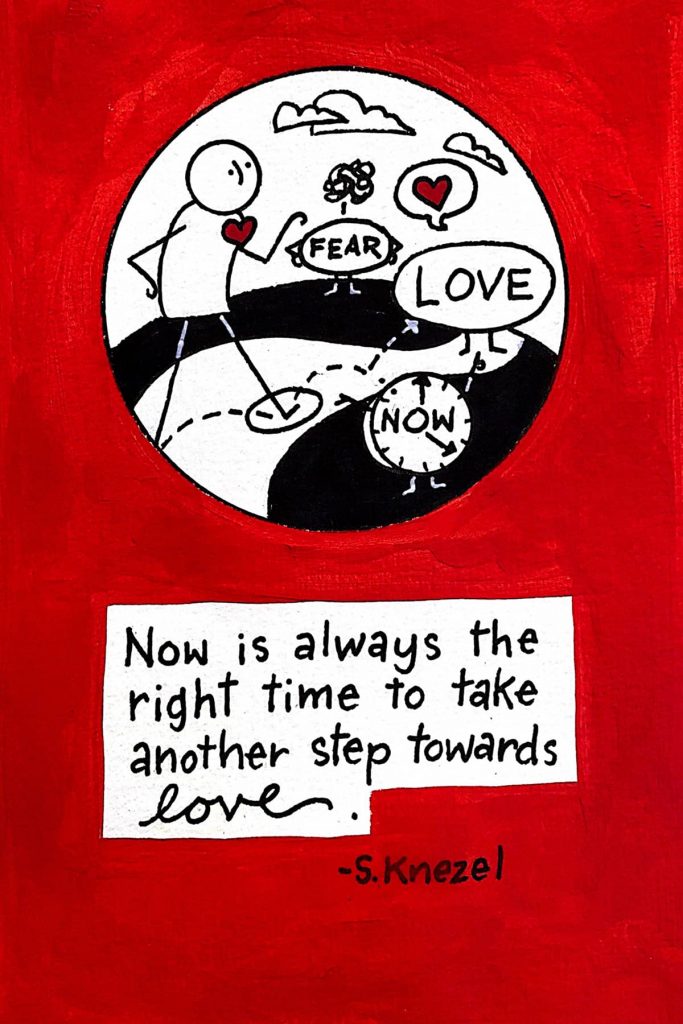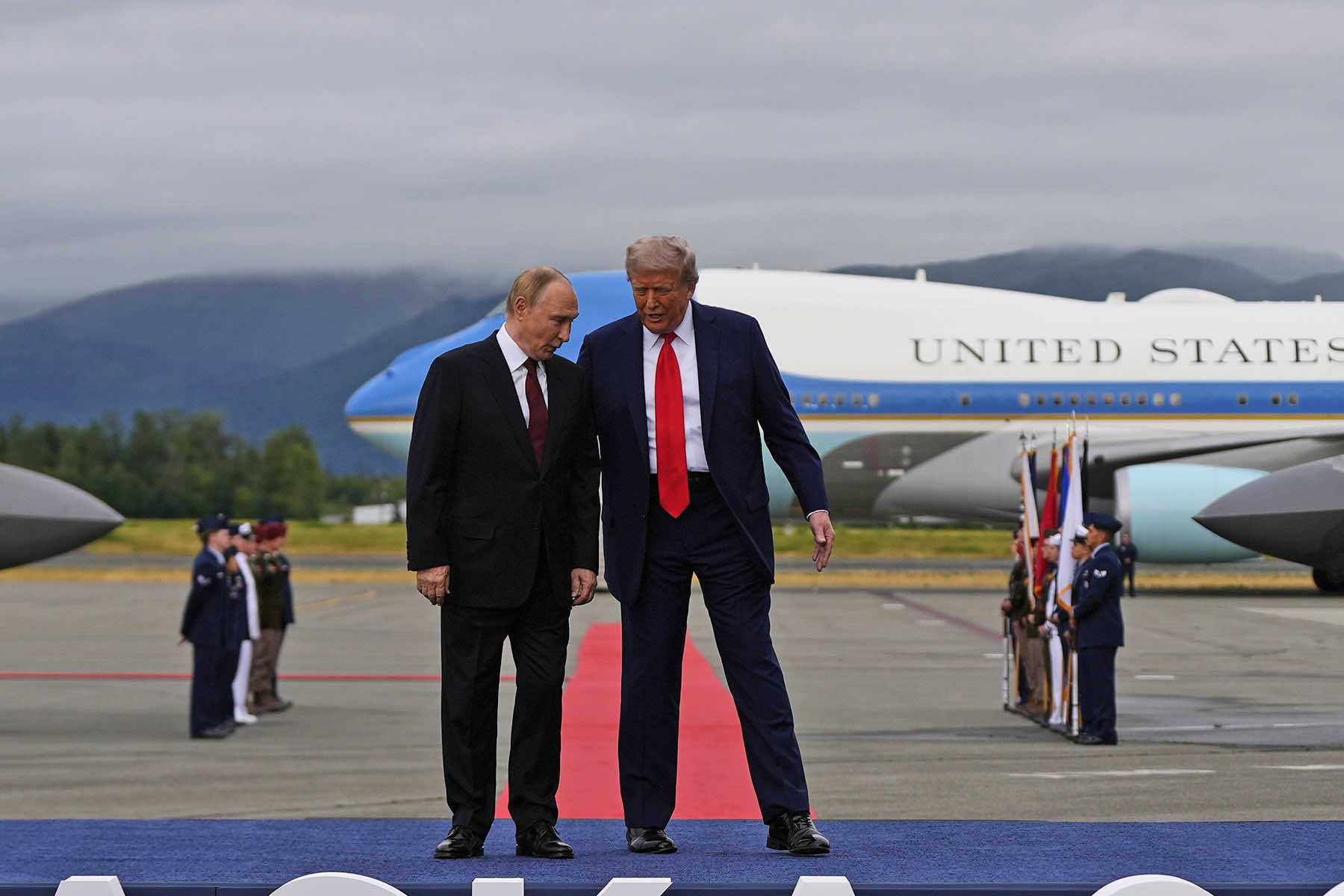
Donald Trump failed to secure an agreement from Vladimir Putin on August 15 to end Russia’s brutal war in Ukraine, falling short in his most significant move yet to stop the bloodshed, even after rolling out the red carpet for the dictator who started it.
The 2 1/2 hour summit in Alaska started with a handshake, a smile, and a ride in the presidential limousine — an unusually warm reception for a U.S. adversary responsible for launching the largest land war in Europe since 1945.
Reporters nearby yelled, “President Putin, will you stop killing civilians?” and Russia’s leader offered no answer, jokingly put his hand up to his ear as though to indicate he couldn’t hear them.
Trump and Putin then shared the U.S. presidential limo known as “The Beast” for a short ride to their meeting site, with Putin offering a broad smile as the vehicle rolled past the cameras.
It was the kind of reception typically reserved for close U.S. allies and belied the bloodshed and suffering in the war Putin started in Ukraine. Although not altogether surprising considering their longtime friendly relationship, such outward friendliness before hours of closed-door meetings is likely to raise concerns from Ukrainian President Volodymyr Zelenskyy and European leaders, who fear that Trump is primarily focusing on furthering U.S. interests and not pressing hard enough for Ukraine’s.
Zelenskyy and European leaders were excluded from Trump and Putin’s discussions, and Ukraine’s president was left posting a video address in which he expressed his hope for a “strong position from the U.S.”
“Everyone wants an honest end to the war. Ukraine is ready to work as productively as possible to end the war,” he said, later adding, “The war continues and it continues precisely because there is no order, nor any signals from Moscow, that it is preparing to end this war.”
The summit was a chance for Trump to prove he’s a master dealmaker and peacemaker. He likes to brag about himself as a heavyweight negotiator and has boasted that he could easily find a way to bring the slaughter to a close — a promise he has been unable to keep so far.
They were expected to give a joint news conference at the end of their talks but took no questions from reporters and offered scant details. Instead, Putin said they had hammered out an “understanding” on Ukraine and warned Europe not to “torpedo the nascent progress.” Trump said they had made “great progress” at their summit, but there were still sticking points.
“There’s no deal until there’s a deal,” the U.S. president said. He said he would call Ukrainian President Volodymyr Zelenskyy and European leaders to brief them on the talks, which lasted about two hours.
Trump, who for years has balked at American support for Ukraine and expressed admiration for Putin, had boasted confidently for months during his 2024 re-election campaign that he alone could easily bring about an end to the war on his first day back in the White House.
Seven months later, after ambushing and berating President Zelenskyy in the Oval Office and stanching the flow of some U.S. military assistance to Kyiv, Trump could not bring Putin even to pause the fighting, as his forces made gains on the battlefield.
EVERY TIME TRUMP AND PUTIN HAVE MET, TRUMP HAS HUMILIATED HIMSELF AND AMERICA
Trump had offered Putin both a carrot and a stick, issuing threats of punishing economic sanctions on Russia while also extending a warm welcome at Joint Base Elmendorf-Richardson in Anchorage, but he appeared to walk away without any concrete result on ending the war in Ukraine, now in its fourth year.
The U.S. president had wanted to show off his deal-making skills, while Putin had the opportunity to try to negotiate a deal that would cement Russia’s gains, block Kyiv’s bid to join the NATO military alliance, and eventually pull Ukraine back into Moscow’s orbit.
“We had an extremely productive meeting, and many points were agreed to,” Trump said. “And there are just a very few that are left. Some are not that significant. One is probably the most significant, but we have a very good chance of getting there.”
He continued: “We didn’t get there.”
PUTIN THANKS TRUMP FOR HIS FRIENDLY TONE
For Putin, just being on U.S. soil for the first time in more than a decade was validation after his ostracization following his invasion of Ukraine.
Critics of the meeting said that Putin had already won regardless of the summit’s outcome. Trump meeting him legitimized him and undercuts Western efforts to isolate the war criminal.
His meeting with Trump may stall the economic sanctions that the U.S. president had promised unless Moscow worked harder to bring fighting to a close. It may now simply lead to more meetings, giving his forces more time to make progress on the battlefield.
Putin thanked Trump for the “friendly” tone of their conversation and said Russia and the United States should “turn the page and go back to cooperation.”
He praised Trump as someone who “has a clear idea of what he wants to achieve and sincerely cares about the prosperity of his country, and at the same time shows understanding that Russia has its own national interests.”
“I expect that today’s agreements will become a reference point not only for solving the Ukrainian problem, but will also mark the beginning of the restoration of businesslike, pragmatic relations between Russia and the U.S.,” Putin said.
Both men arrived at the summit with criminal status. Putin is wanted by the International Criminal Court for war crimes, including the abduction of Ukrainian children. Trump is a convicted felon, the first American president ever to carry that title while in office. One has been indicted for atrocities abroad, the other convicted for crimes at home — and together they shared a red carpet, a motorcade, and the stage. For critics, it was more than a bad look. It was a meeting of two men who have undermined the rule of law in their own ways, now offering each other validation on U.S. soil.
Despite not reaching any major breakthrough, Trump ended his remarks by thanking Putin and saying, “we’ll speak to you very soon and probably see you again very soon.”
When Putin smiled and offered, “next time in Moscow,” Trump said “that’s an interesting one” and said he might face criticism but “I could see it possibly happening.”
Trump and Putin had greeted each other like old friends, and gripped hands for an extended period of time on a red carpet rolled out at the military base. As they chatted, Putin grinned and pointed skyward, where B-2s and F-22s — military aircraft designed to oppose Russia during the Cold War — flew overhead.
NOT A ONE-ON-ONE MEETING
White House press secretary Karoline Leavitt said shortly before Air Force One touched down that the previously planned one-on-one meeting between Trump and Putin would be a three-on-three discussion including Secretary of State Marco Rubio and special envoy Steve Witkoff. Putin was joined by Foreign Minister Sergey Lavrov and foreign affairs adviser Yuri Ushakov.
The change seemed to indicate that the White House was taking a more guarded approach than it did during a 2018 meeting in Helsinki, where Trump and Putin met privately with their interpreters and Trump then shocked the world by siding with the Russian leader over U.S. intelligence officials on whether Russia meddled in the 2016 campaign.
Zelenskyy’s exclusion was also a heavy blow to the West’s policy of “nothing about Ukraine without Ukraine” and invites the possibility that Trump could agree to a deal that Ukraine does not want.
WAR STILL RAGES AS RUSSIA CONTINUES TARGETING CIVILIANS
Russia and Ukraine remain far apart in their demands for peace. Putin has long resisted any temporary ceasefire, linking it to a halt in Western arms supplies and a freeze on Ukraine’s mobilization efforts, which are conditions rejected by Kyiv and its Western allies.
The meeting comes as the war has caused heavy losses on both sides and drained resources. Ukraine has held on far longer than some initially expected since the February 2022 invasion, but it is straining to hold off Russia’s much larger army, grappling with bombardments of its cities and fighting for every inch on the over 600-mile front line.
Alaska is separated from Russia at its closest point by just 3 miles and the international date line.
Joint Base Elmendorf-Richardson was crucial to countering the Soviet Union during the Cold War. It continues to play a role today, as planes from the base still intercept Russian aircraft that regularly fly into U.S. airspace.

